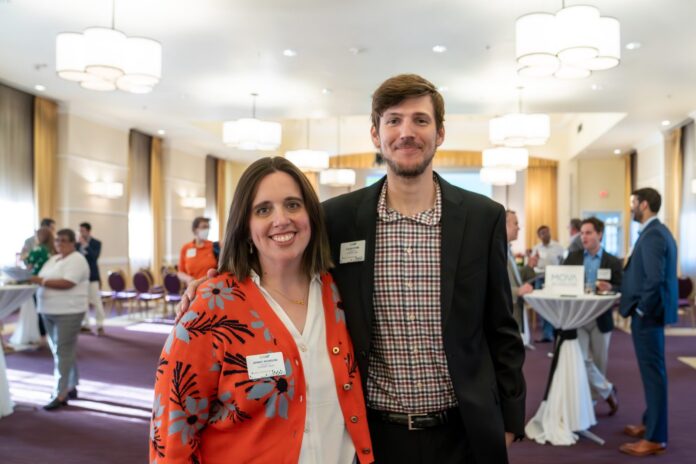In January 1992, a cargo ship rocked by a storm dumped shipping containers carrying close to 29,000 rubber ducks and other Chinese-made bath toys into the Pacific Ocean.
Two decades later, that event inspired the name for a biotech spinoff based on fluid-flow research by Jennifer Munson, associate professor at the Fralin Biomedical Research Institute at VTC.
Called Cairina Inc., the enterprise’s name is drawn from the Latin genus for the Muscovy duck, and its goal is to improve cancer treatment.
The accidental spill drew widespread media attention. It generated a rare opportunity for educators to develop lessons on using data on ocean currents to predict, with a high degree of accuracy, when and where the ducks would wash ashore.
Those lessons inspired Jessica Cunningham, a research scientist and mathematical oncologist in the Munson Lab. She suggested the name because she saw parallels between oceanographers’ predictions on the floating ducks and her team’s work in mapping fluid flow to predict the spread of glioblastoma, the most common and aggressive cancerous brain tumors in adults.
“We need better treatments for patients facing complex and hard-to-treat cancers,” said Munson, who is also an associate professor with the Department of Biomedical Engineering and Mechanics and a co-director of the Virginia Tech Cancer Research Alliance. “The five-year survival rate [for glioblastoma] is just under 7 percent. We want to provide oncologists and neurosurgeons with a roadmap for an individual patient’s tumor microenvironment so that they can offer more targeted therapies.”
Caleb Stine, a senior research associate in the Munson lab, was at his desk analyzing data in 2022 when Munson called him into her office and asked him to take on a new challenge — build a business plan around the idea of using fluid flow to predict the spread of the highly aggressive disease within the brain.
Today, Stine is part of a team of five commercializing a decade’s work of work. In addition to Munson, Stine, and Cunningham, co-founders include Associate Professor Russell Rockne and Assistant Research Professor Ryan Woodall, specialists in computational and quantitative medicine with City of Hope in California.
“Our business is predicting where tumors are going to progress. That’s not been something that’s been possible before,” Stine said.
During brain tumor treatment, a surgeon may remove a tumor and some of the surrounding tissue, where cancerous cells may have strayed. By using noninvasive MRI and mathematical modeling to map fluid flow, the Cairina team believes they can better predict where the cancerous tumors will grow and spread.
Their goal is for surgeons to use Cairina’s tools to surgically target at-risk regions more precisely, to preserve disease-free tissue, and to more effectively deliver radiation.
“Our eventual goal will be to partner with imaging device companies that make the MRIs and integrate it directly into their software,” Stine said.
Stine enrolled in workshops through Virginia Tech’s LINK + LICENSE + LAUNCH program, and Cairina was accepted in the Roanoke-based Regional Accelerator and Mentoring Program (RAMP) for spring 2023. The company officially formed on Feb. 27.
“We just hit the ground running,” said Stine, who works full time in the Munson lab and devotes nights and weekends to Cairina. The team recently received proof-of-concept funding from Virginia Tech Intellectual Properties, which will help them build the business, define the market, and work through steps needed to license the intellectual property.
Stine pitched Cairina at RAMP’s Demo Day in June, where they joined a group of early-stage firms outlining their business strategies and growth plans to a business audience. While the focus has been on improving survival rates for patients with glioblastoma, Munson and her team also see the potential for other applications.
Stine is grateful for the experience and said he is taking advantage of support from Virginia Tech and the local business community to learn about translational research, which introduces or enhances a drug, device, diagnostic tool, or behavioral intervention.
“That’s where you get the research out of the lab and into the hands of the people who need it,” he said.

